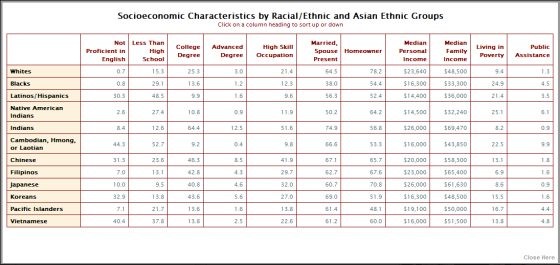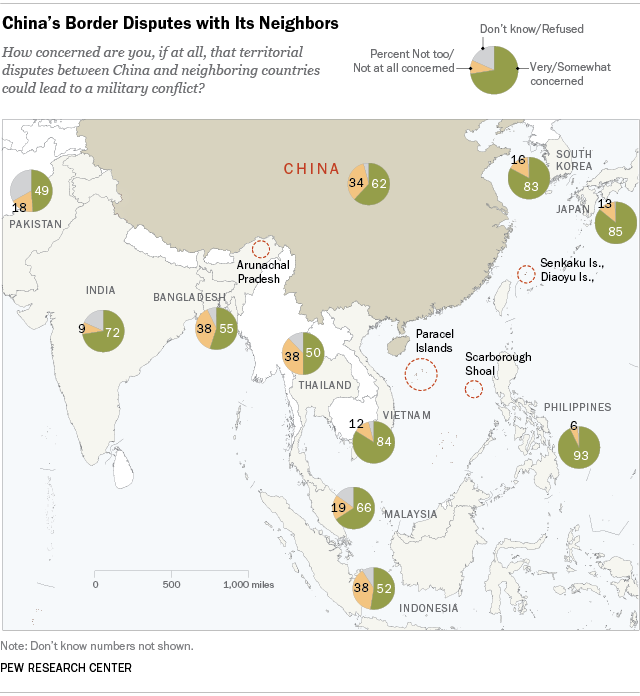Korean Americans AsianNation
Post on: 1 Октябрь, 2015 No Comment

Viet Nam
Research Resources Used/
Recommended for Further Reading
Choi, Yearn Hong and Haeng-Ja Kim (Eds.). 2004. Surfacing Sadness: A Centennial of Korean-American Literature 1903-2003. Homa & Sekey.
Chung, Angie. 2007. Legacies of Struggle: Conflict and Cooperation in Korean American Politics. Stanford University Press.
Kim, Christian. 2004. Korean-American Experience in the United States: Initial Thoughts. Hermit Kingdom Press.
Kim, Hugo. 2003. Korean Americans and Inter-Korean Relations. East-West Research Institute.
Kim, Ilpyong J. 2007. Korean-Americans: Past, Present, and Future. Hollym International Corp.
Kim, Kwang Chung, R. Stephen Warner, and Ho-Youn Kwon (Eds.). 2001. Korean Americans and Their Religions: Pilgrims and Missionaries from a Different Shore. Penn State University Press.
Kim, Nadia. 2008. Imperial Citizens: Koreans and Race from Seoul to LA. Stanford University Press.
Lee, Namhee. 2007. The Making of Minjung: Democracy and the Politics of Representation in South Korea. Cornell University Press.
Oak, Susan and Virginia Martin. 2006. American/Korean Contrasts: Patterns and Expectations in the U.S. and Korea. Hollym International Corp.
Park, Kyeyoung. 1997. The Korean American Dream: Immigrants and Small Business in New York City. Cornell University Press.
Site Tools
- Follow Latest Posts on Twitter
- Read Latest Posts on your Kindle
- Be a Fan of Asian-Nation on Facebook
- Print This Page
- Translate Into Another Language
This article is an edited chapter on the major historical events and contemporary characteristics of the Korean American community, excerpted from The New Face of Asian Pacific America: Numbers, Diversity, and Change in the 21st Century . edited by Eric Lai and Dennis Arguelles in conjunction with AsianWeek Magazine and published by the UCLA Asian American Studies Center.
The history of Koreans in America began when some 7,000 Koreans were recruited and brought to Hawai’i as plantation laborers, from 1903-1905. They were brought in to meet the labor demand on the Hawaiian plantations after a series of laws barring Chinese labor immigration were enacted. Before the door was completely closed in 1924 due to the National Origins Act, about 1,100 Korean picture brides were brought in.

These brides were better educated than their male partners, and brought life and hope to the predominantly bachelor community. They actively took part in church activities and independence movements that helped free their homeland from Japanese colonial rule. Students and political exiles constituted the third group of early Korean immigrants and they provided significant leadership in the pre-World War II Korean American community. Syngman Rhee, who later became the first president of the Republic of Korea, and Ahn Chang Ho, another political activist, are well known examples.
American intervention in the Korean War (1950-53) triggered the second wave of Korean immigration. American soldiers stationed in Korea brought home Korean brides, arranged adoption of war orphans to American homes, and sponsored students to come to the United States. Between 1951 and 1964, approximately 6,500 brides, 6,300 adopted children, and 6,000 students came to this country. The number of Koreans who have immigrated to this country as adopted children, or brides of Americans, since the Korean War is more than 100,000 for each respective group.
After 1965, students-turned professionals were able to apply for permanent residence visas in the United States under provisions of the Hart-Cellar Act. Since 1970, close relatives of permanent residents or citizens have comprised an overwhelming majority of the Korean immigrants coming to America. A total of 778,899 Korean immigrants were admitted to the U.S. between 1941 and 1998. Korean immigration peaked during the 1980s and annual admittance has steadily declined since 1987.
Still, the historically steady and substantial inflow of immigration frorn Korea has accelerated the growth of the Korean population in the U.S. Since 1970, when it was about 70,000, the Korean population has increased more than fifteen-fold to 1.07 million in the year 2000 (1.23 million when including Koreans who are part Asian, and mixed race).
Forty-four percent of Koreans live in the West, compared to 22 percent of the general population. Nevertheless, the geographic distribution has changed significantly since the 1960s, as Koreans have been quicker than other APAs to disperse themselves across the wider regions of the U.S. Travelers are likely to find at least one or more Korean churches with a sign written in Hangul characters in most metropolitan cities in America. Most remarkable is the increase in the numbers of Korean Americans in the South, which grew 46 percent between 1990 and 2000.
Nonetheless, Koreans as a whole are still concentrated in just a few large metropolises. Southern California leads the way. More than a quarter million Korean Americans live in the Los Angeles-Riverside-Orange County-San Bernardino-Ventura metro area. Next is the conglomerate encompassing New York City and the surrounding northern New Jersey, southwerst Connecticut, and eastern Pennsylvania area. Forty percent of all Koreans in the United States are found in these two regions.
Korean churches, Korean supermarkets, and many other types of Korean firms serving mainly their own ethnic clienteles are found in these areas. Koreans also constitute a significant minority of the resident population in several cities in these areas.
Koreans are entrepreneurs par excellence. Surveys conducted in Los Angeles, Chicago, New York, and Atlanta confirm that about one-third of Korean immigrant households engage in a self-owned business. In the 1970s, a typical newly-arrived family would start a small business after a few years of work on assembly lines or with maintenance companies. Nowadays, many start business shortly after arrival thanks to the strong economy and liberalization of foreign exchange laws in Korea.
The 1997 U.S. Economic Census confirmed many of the anecdotal pictures of Korean business patterns that have been reported in Korean newspapers. With more than 155,000 businesses, Koreans rank third among APAs, after the Chinese and Indians. But their tendency to enter into business is one of the highest among all minority ethnic/racial groups. For instance, the rate of Korean business ownership is 71 percent higher than their share of the population, highest of all the major Asian ethnic groups.
Why do Koreans concentrate in small business? Potential profitability is one obvious reason. But the more important reason is that many Korean immigrants face status inconsistency and the ensuing erosion of self-esteem after arriving in the U.S. A majority of Korean immigrants earned college degrees and held professional jobs before moving to America. Language difficulties and unfamiliarity with American culture prevent many from finding a satisfactory job commensurate with their education and work experience. Their options are: 1) work in a safe but lower-status and less rewarding job, or 2) operate their own business in a risky and difficult environment. Running one’s own business is difficult and risky, but gives psychological satisfaction of being one’s own boss and a status of sajangnim. or president in Korean. Many immigrants therefore opt for entrepreneurship.
The data clearly show that within the American business structure and its clear racially-based hierarchy, Korean-owned firms occupy a middleman minority status sandwiched between the dominant group (non-Hispanic Whites) and less powerful classes (African Americans and Hispanics). To compete successfully, Korean small business owners work long hours, mobilize family labor, and ethnic resources. Husband and wife team up to operate the family business without vacations or weekends. Their children also help during the afterschool hours.
During a relatively short period in America, Korean immigrants have concentrated in building an economic base for themselves and for their children. For some, that means locating in poor urban minority-dominated ghettos; for others, it means moving into middle-class suburbs. Their lives involve mingling with both the poor and wealthy, the majority and the minority. Koreans have become a visible and significant minority in this multi-ethnic and multi-cultural nation. This hardworking, highly educated, and actively organized ethnic community is increasing its stake in the American society. The impact will be tremendous very soon when the second-generation of Korean Americans reach adulthood.
Suggested reference. Chang, Edward Taechan. 2003. Korean Americanswww.asian-nation.org/korean.shtml> ( ).
All submitted comments are first reviewed before appearing on the site. Constructive disagreement and intelligent debate are fine and encouraged. Comments that just spew personal hatred, contain personal attacks, excessive profanity, spam or are blatantly offensive, slanderous, threatening, racist, or irrelevant to the topic are not and will be edited out or deleted, along with duplicate comments submitted on multiple articles.














